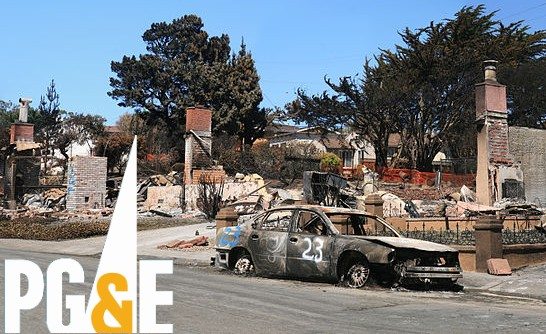Labor & Economy
Summer and Smoke


Photo: Mbz1/Wikipedia
Two weeks ago federal investigators from the National Transportation Safety Board (NTSB) concluded that the horrific gas pipeline explosion that killed eight people last September in the Bay Area city of San Bruno resulted from a “litany of failures” by utility giant Pacific Gas and Electric. Investigators charged PG&E with “poor record-keeping, inadequate inspection programs, and an integrity management program without integrity.”
According to internal PG&E documents and emails released in the investigation, the private company had ample warning that the gas line’s welds may have had dangerous flaws.
PG&E was unprepared to respond to the disaster. They didn’t have an emergency plan and relied on manual rather than automatic shutoff valves on the pipeline – which cost its workers 95 precious minutes to halt the flow of gas after the fire erupted.
It’s now clear that PG&E could have done a much better job ensuring the integrity of their lines. They could and should have spent more to upgrade safety systems, maintain good records and conduct regular rigorous inspection of the 5,786 miles of pipes they operate between Bakersfield and the Oregon border.
Alongside their operational failures, PG&E and their industry allies could have done a lot less lobbying to block stronger regulations that might very well have prevented the accident in the first place. PG&E spent nearly $100 million lobbying Congress and federal regulatory agencies since 2006.
For years, PG&E and utility lobbyists have used a standard set of arguments to head off proposed safety regulations: They would mean higher costs to consumers, impose impractical and rigid prescriptions, and institute unnecessary rules and one-size-fits-all regulations that don’t work. If PG&E weren’t reeling from the disaster today, they’d likely be calling new legislative proposals to strengthen pipeline protections “job killers.”
PG&E lobbied aggressively – and successfully — against several key safety proposals over the last decade.
The NTSB has repeatedly made recommendations since 1969 calling for the use of automatic shut-off valves instead of manual valves to allow quicker shutdown when a problem starts. PG&E and industry lobbyists successfully blocked the recommendations every time, claiming high costs and uncertain effectiveness.
A PG&E engineer wrote federal regulators that quicker shut down of gas “may give the public a false sense of security.”
PG&E led a successful lobbying effort in 2003 to persuade federal regulators to endorse an inspection method that many experts deemed insufficient. The “direct assessment” technique the utilities favored relies only on spot checks of the outside of pipes — not their insides, nor of the welds that can fail.
They also fought proposals in 2003 that would have forced companies to report what inspection methods they were using on pipelines. In 2009 a spokesperson for the American Gas Association, a trade group representing PG&E and other distributors called the reporting requirements “unreasonable, illogical and of limited value.”
No one can be absolutely certain that these and other proposals would have prevented the San Bruno disaster. But there is wide agreement that they could have addressed some of PG&E’s critical failures and that could have saved lives.
PG&E’s opposition to pipeline safety standards followed a predictable pattern by industries that are asked to be responsible corporate actors to protect the public against health, safety and environmental dangers. As happens after many accidents, legislators may now have little choice but to ignore industry rhetoric and pass legislation that will strengthen pipeline rules.
In the future however, after memories of the tragedy fade, we shouldn’t have to wait until lives are lost to pass new laws as industry goes back to claiming that health and safety proposals are “Big Government job killers.” When that time comes, we should just stop listening and respond with Ronald Reagan’s famous phrase, “There they go again.”

-

 Latest NewsApril 10, 2024
Latest NewsApril 10, 2024The Transatlantic Battle to Stop Methane Gas Exports From South Texas
-

 Latest NewsApril 23, 2024
Latest NewsApril 23, 2024A Whole-Person Approach to Combating Homelessness
-

 Latest NewsMarch 27, 2024
Latest NewsMarch 27, 2024Street Artists Say Graffiti on Abandoned L.A. High-Rises Is Disruptive, Divisive Art
-

 State of InequalityApril 11, 2024
State of InequalityApril 11, 2024Dispelling the Stereotypes About California’s Low-Wage Workers
-

 Latest NewsApril 24, 2024
Latest NewsApril 24, 2024An Author Reflects on the Effort to Rebuild L.A. After the ‘Violent Spring’ of 1992
-

 State of InequalityMarch 28, 2024
State of InequalityMarch 28, 2024Los Angeles Hotel Workers Could Use the 2028 Olympics to Their Advantage
-

 Striking BackApril 12, 2024
Striking BackApril 12, 2024Organizing the Slopes
-

 State of InequalityApril 25, 2024
State of InequalityApril 25, 2024California Often Leads Change, but Not for Single-Payer Health Care



















